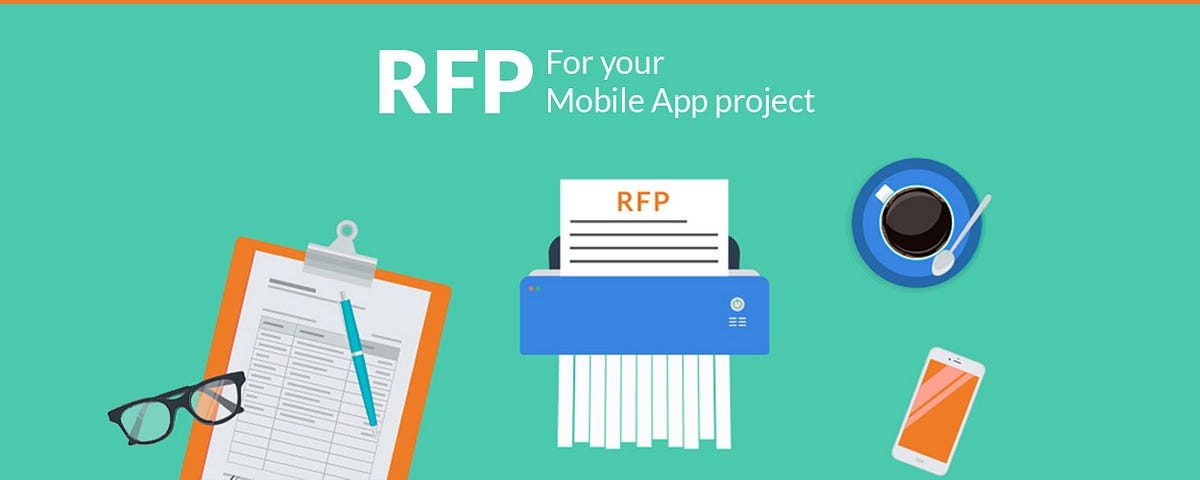
Ace Your Offshore Flutter Development RFP: Insider Tips and Sample RFP Template
In today’s digital age, mobile apps have become an essential part of business operations. They allow businesses to reach a wider audience, provide better customer service, and improve efficiency. However, developing a high-quality mobile app can be a complex and expensive undertaking. This is why many businesses choose to outsource their app development to specialized firms.
When outsourcing app development, it is important to carefully select the right partner. This is where a Request for Proposal (RFP) comes in. An RFP is a formal document that outlines the project requirements and invites potential vendors to submit proposals. By issuing an RFP, companies can gather information from multiple vendors and compare their qualifications, experience, and pricing.
Why businesses should issue RFP for app development:
- According to a survey by Clutch, 61% of businesses that outsourced their app development project were satisfied with the results.
- A study by Forrester Research found that outsourcing app development can save businesses up to 60% of the cost of developing an app in-house.
- A report by Gartner found that 80% of businesses that issue an RFP for app development are successful in finding the right partner for their project.
Are you one of the below?
Any business that is considering outsourcing its app development should issue an RFP. This includes businesses of all sizes, from startups to large enterprises.
- Businesses that are new to app development and need guidance from an experienced partner
- Businesses that have a limited budget and need to find a vendor that can provide competitive pricing
- Businesses that have a complex or specialized app development project that requires a team of experts
- Businesses that are looking for a long-term partnership with a vendor that can provide ongoing support and maintenance
Why Issuing a Right RFP is so important?
Issuing an RFP is a crucial step in the app development process. It helps businesses to gather information from multiple vendors, compare their qualifications and proposals, and select the partner that best meets their needs. By avoiding the issuance of an RFP, businesses expose themselves to various risks that can hinder the success of their app development project.
1. Choosing the wrong partner: Without an RFP, businesses may not have enough information to make an informed decision about which vendor to partner with. This could lead to selecting a vendor that is not a good fit for the project, resulting in poor communication, missed deadlines, and a subpar app.
2. Overpaying for services: Without an RFP, businesses may not have the leverage to negotiate the best possible price for app development services. This could lead to overpaying for services that could have been obtained at a lower cost from another vendor.
3. Scope creep and budget overruns: Without a clear scope of work defined in an RFP, the project may be prone to scope creep, where additional features or requirements are added without proper consideration of the impact on the project timeline and budget. This can lead to delays, budget overruns, and frustration for both the business and the vendor.
4. Lack of transparency and accountability: Without an RFP, there may be a lack of transparency and accountability throughout the development process. This could make it difficult for businesses to track the progress of the project, identify potential problems early on, and hold the vendor accountable for their deliverables.
5. Legal and contractual issues: An RFP can help to establish clear contractual obligations between the business and the vendor. Without an RFP, there may be a lack of clarity regarding the scope of work, deliverables, timelines, payment terms, and intellectual property rights. This could lead to legal and contractual disputes in the future.
Why Issue an RFP for App Development?
There are many reasons why businesses should issue an RFP for app development. Here are some of the most important benefits:
- Gather information from multiple vendors: An RFP allows businesses to gather information from multiple vendors, including their qualifications, experience, pricing, and approach to the project.
- Compare vendors: By comparing proposals from multiple vendors, businesses can ensure that they are getting the best possible value for their money.
- Reduce risk: An RFP can help to reduce risk by identifying potential red flags early on in the selection process.
- Improve communication: An RFP can help to improve communication between businesses and potential vendors by establishing clear expectations from the start.
How to Issue an RFP for App Development
Here are the steps on how to issue an RFP for app development:
Define your project requirements: Clearly define the scope of your project, including the goals, objectives, and target audience for your app.
Identify potential vendors: Research and identify potential vendors that have experience in developing apps similar to yours.
Draft the RFP: Draft an RFP that outlines your project requirements, evaluation criteria, and submission instructions.
Issue the RFP: Issue the RFP to your list of potential vendors.
Review proposals: Review proposals from each vendor and select the one that best meets your needs.
Issuing an RFP for app development can be a time-consuming process, but it is worth the effort to ensure that you are selecting the right partner for your project. By following the steps above, you can increase your chances of success and develop a high-quality app that meets your business goals.


